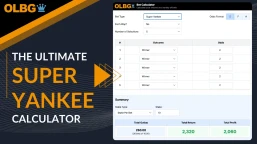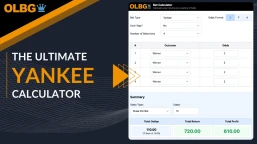
I've spent over 20 years inside the betting industry. I'll guide you to avoid the hype, ignore the noise, and steer clear of the common pitfalls that catch out everyday punters.
How to Assess Football Form
Are you keen to perfect your football betting strategy? Then this article is a must-read! We delve into the use of football form for making predictions. By understanding these patterns, you will have a significant edge, increasing your odds.
We look at analysing team performance stats and collecting other relevant match data
This can be utilised in finding a successful betting angle which the odds compilers from the best football betting sites may have overlooked.
Unlock the Secrets of Football Betting Success 🥅⚽️
After the introduction we will be looking in greater detail at the following topics:
What does form mean in Football?
- In Form Football Teams
- Player Form
- Reading & Utilising Football Form Stats
- How To Use A Current Form Table
- Home & Away Form
- Comparative Results
- Goals Stats Data
- How To Bet On Goals
- Utilising Other Form Factors To Make Winning Predictions
- Managerial Influence
- Head To Head Results
- Team News
- Fixture Schedule
Read his views here
Throughout this article we will refer to existing content shared on site by the members and their thought processes into using football form to find good bets.
Look out for the quote banners like those above and remember you can rely on the best football tips from the huge bank of OLBG football experts.
Once you have found good angles you have the opportunity to take advantage of the free bets page.
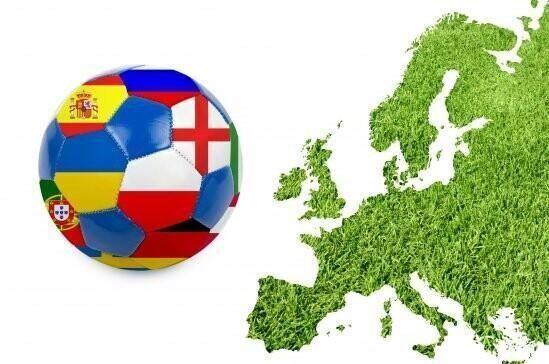
Where to Start
Football bettors all strive towards the same goal in making winning football bets. However, individual strategies can differ greatly including the time spent on utilising ways of how to assess football form in the search for successful predictions.
A glance at the OLBG daily football tips page will highlight the fact tipsters have differing views on football matches and the various betting markets available.
An example of the Full Time result predictions for a Premier League match featuring Arsenal v Liverpool, two top form football teams may look like this:
- Liverpool To Win - 60 of 100 tips (60%)
- The Draw - 25 of 100 tips (25%)
- Arsenal To Win - 15 of 100 tips (15%)
Football Tips
The above example highlights the spread of opinion amongst the 100 tipsters.
The majority (60%) are predicting a win for Liverpool.
Whilst of the remaining 40%, more favour a Draw result (25%) as opposed to an Arsenal Win (15%).
The varying views in some cases may be an allegiance to one of the teams, a hunch or gut feeling on the outcome and in many cases and more importantly as a result of a personal betting strategy regarding the selection process and the various ways of assessing football form.
Understanding cognitive bias and how that affects your betting decisions can also help you avoid some of the most faults in making picks for your football accumulator.
By the way, there are very good football tipsters on OLBG with numerous followers on the OLBG Tipping App.
Take a look at the “Last 12 Months” stats on the Premier League 1x2 Tipster Table to see the number of tipsters consistently making monthly profits over the past year.
The varying profit stats in those tables again highlight how tipsters and bettors differ when it comes to making winning predictions and ways of how to assess football form.
So on the flip side, those of us who struggle to find those winning bets perhaps need to take stock and review the ways we assess form in the pursuit of success. Are we doing enough research?
Without too much effort, many bettors may quickly pick in form football teams when it comes to making selections week in week out.
More often than not the bookies will have these form teams priced as very short odds favourites so there is not much of a betting edge backing singles or in accumulators.
As a result, securing a profit long term is not easy with these selections as a slip up one week may mean your acca has bitten the dust or if betting singles then you need two or three subsequent successful bets to eradicate the previous loss.
Consistently finding winning predictions where we feel the bookies have been a little generous with their odds will see us on the right path to success.
Making a winning football bet without too much effort is fine, however, making a winning prediction derived from excellent form assessment which highlights a betting edge the majority of punters have not considered through lack of research is even better.
Plus it is more rewarding not only for your betting funds but also for the personal satisfaction gained from a solid form assessment of your own doing.
Before we look at the various aspects of using free football stats data and utilising other key form factors in our quest to find profitable football bets and predictions, we need to ask this question:
What Does Form Mean In Football?
“Form” can generally be defined as the current and recent performance level of a team and players, collectively, individually, good or bad.
In Form Football Teams
“In form” football teams on a winning streak would appear an obvious choice for making winning predictions, especially if facing teams experiencing a poor run of defeats without a win in sight.
Here is an example from Italy’s Serie A:
Lazio v Brescia
Lazio currently sit in 2nd spot with 62 points in Serie A and just one point off leaders Juventus.
Brescia have just 16 points and currently sit bottom in 20th position in Serie A.
Below are tables showing the last eight Serie A results for both football teams, the most recent at the bottom:
| Home | Score | Away |
|---|---|---|
| Lazio | 5-1 | Sampdoria |
| A S Roma | 1-1 | Lazio |
| Lazio | 5-1 | SPAL |
| Lazio | 0-0 | Hellas Verona |
| Parma | 0-1 | Lazio |
| Lazio | 2-1 | Inter Milan |
| Genoa | 2-3 | Lazio |
| Lazio | 2-0 | Bologna |
We can see Lazio have:
- Won their last four Serie A matches and six of their last eight, drawing the other two.
- Scored more than one goal per game in five of those matches, including the last three.
- Kept three clean sheets and conceded more than one in only one of those eight matches.
Now we look at the current form of Brescia
| Home | Score | Away |
|---|---|---|
| Sampdoria | 5-1 | Brescia |
| Brescia | 2-2 | Cagliari |
| Brescia | 0-1 | AC Milan |
| Bologna | 2-1 | Brescia |
| Brescia | 1-1 | Udinese |
| Juventus | 2-0 | Brescia |
| Brescia | 1-2 | Napoli |
| Sassuolo | 3-0 | Brescia |
On the other hand, Brescia have:
- Lost their last three Serie A matches and six of the last eight, drawing the other two.
- Failed to score a goal in three of those eight matches and managed to score more than once in only one.
- Failed to keep a clean sheet in those eight matches and have conceded more than one goal on six occasions.
So Lazio are clearly one of the top form football teams showing the better recent form and in actual fact they are unbeaten in their last twenty one Serie A matches, winning seventeen and drawing four.
Whilst Brescia’s poor run actually stretches back eleven Serie A matches without a win, losing eight and drawing three.
Even without using in depth analysis, avid football fans and bettors will have a good idea of the current best form football teams for providing the nucleus of the selections on their betslip.
Using the example, Serie A followers and Lazio fans in particular will be aware of their team’s twenty one match unbeaten run in Serie A stretching back five months.
An unbeaten league run stretching back five months also prompts the following questions:
Does form in football have to be defined as just recent or current?
The ‘form’ definition does imply the relevance is to more recent performances.
Are the first three months of Lazio’s five month unbeaten run then not relevant when we are assessing ‘form’ ?
However you assess it, their recent and current form has been a a continuation of good form over the past five months.
Player Form
So we have looked at an example of team form, now the other aspect of our form definition is player form.
You could describe in form players as the current key components of in form football teams.
Players obviously have varying levels of ability, with that comes performance expectations from fans and ultimately the manager who has placed their trust in the ability to perform and contribute to the team.
If your top goal scorer is in peak form, converting a high ratio of numerous goal scoring opportunities then there is a fair chance the team’s form as a whole is in good shape.

Not necessarily though if the goalkeeper is making a few howlers and the team defensively are struggling to keep the opposition out.
We will expand on the impact player availability can have on team selection and current form in the “Utilising Other Form Factors To Make Winning Predictions” section under ‘Team News’ a bit later on.
To conclude this section on ‘Player Form’ and to engage our thought process using the Lazio v Brescia example, here are the best odds (decimal) available for the Full Time Result market:
- 1.33 - Lazio to Win
- 5.00 - Draw
- 10.00 - Brescia To Win

* For an explanation on understanding betting odds probability and how to convert decimal odds into percentage terms and vice versa please visit our excellent A Guide To Understanding Bookmakers & Full Explanation of Betting Odds article.
So, we may assess Lazio as a solid choice to win this match based purely on their current form.
Although fairly prohibitive odds at 1.33 which is 75% in percentage terms, we need to be confident that if they played Brescia 100 times they would win at least 75.
Now if after looking at Lazio’s recent form we have discovered they will be without two key players for this match.
Would we still view them as a solid pick at 1.33 to beat Brescia, do these odds now truly reflect their chances of winning?
We may still conclude Lazio are the most likely winners but a seed of doubt has been sown into our minds which leads to more decision making.
This is just one scenario emphasising consideration should be given to other factors that may impact on how we assess football form.
Other important factors can influence how a team is likely to perform on any given day, however, the selection process needs to have a starting point, and analysing a team’s current performance stats provide a solid base.
Reading & Utilising Football Form Stats
Football form stats can be utilised to assess team performance over a designated period and the whole season. Reading football form stats in categorised table format allows assessment to be made on a team’s home & away form, compare results with other teams and utilise goals scored & conceded data for betting on goals markets.
In the Betting Strategy Section on OLBG, the “Premier League Statistics From Different Angles” that blog is jam packed full of useful stats including:
- Betting on the favourite.
- Draw or underdog.
- Home or away wins.
- Both Teams To Score and Total Goals.
- Correct Score.

If we refer back to the definition of “What does form mean in football?” and focusing on the reference to the recent and current form of a football team then a good starting point of ways to assess form is with a current form table.
We will begin by analysing a current form table before exploring other ways of utilising football form stats which are freely available and an invaluable betting resource towards our ultimate aim in making winning football predictions.
How To Use A Current Form Table
A Current Form table displays the win, draw, loss, goals scored, goals against and points accrued record over a recent period for football teams in a league. By analysing the football teams stats and points won a comparison can be made on who have performed better than others during this period.
Generally a six or eight match form table provides bettors with a nice data sample size to analyse recent matches covering the last six weeks or so and assess who are the in form football teams.
The eight match form table is likely to provide a nice spread of say four home and four away matches for teams over the recent period allowing form students to compare any bias.
At this point it’s important to note these Current Form Tables refer to league matches only, so domestic Cup matches are not included along with Champions League and Europa League matches where applicable.
Here is an example of a current form table covering the last eight matches in the English Premier League:
Last 8 Matches
| Team | W | D | L | GF | GA | Pts |
|---|---|---|---|---|---|---|
| Liverpool | 7 | 0 | 1 | 16 | 7 | 21 |
| Arsenal | 4 | 4 | 0 | 14 | 6 | 16 |
| Man City | 5 | 1 | 2 | 14 | 8 | 16 |
| Burnley | 4 | 3 | 1 | 10 | 6 | 15 |
| Man Utd | 4 | 2 | 2 | 12 | 5 | 14 |
| Sheff Utd | 4 | 2 | 2 | 7 | 6 | 14 |
| Wolves | 3 | 4 | 1 | 11 | 7 | 13 |
| Chelsea | 3 | 3 | 2 | 15 | 10 | 12 |
| Everton | 3 | 3 | 2 | 13 | 14 | 12 |
| Tottenham | 3 | 2 | 3 | 11 | 10 | 11 |
| C Palace | 3 | 2 | 3 | 7 | 9 | 11 |
| Newcastle | 2 | 4 | 2 | 5 | 8 | 10 |
| Southampton | 3 | 0 | 5 | 10 | 14 | 9 |
| Leicester | 2 | 2 | 4 | 12 | 9 | 8 |
| Watford | 2 | 2 | 4 | 10 | 10 | 8 |
| Bournemouth | 2 | 1 | 5 | 9 | 15 | 7 |
| Norwich | 2 | 1 | 5 | 3 | 11 | 7 |
| A Villa | 2 | 1 | 5 | 9 | 20 | 7 |
| Brighton | 0 | 5 | 3 | 7 | 11 | 5 |
| West Ham | 1 | 2 | 5 | 10 | 17 | 5 |
Looking at the current form table we can see Liverpool at the top having amassed 21 points, winning seven of their last eight Premier League matches and losing just once.
Arsenal are the only team to remain unbeaten in the last eight League matches, winning four and drawing four.
At the bottom end, Brighton are the only team that have failed to win in their last eight League matches.
The table below specifically shows Liverpool’s last eight results with the most recent at the bottom:
| Home | Score | Away |
|---|---|---|
| Liverpool | 2-0 | Man Utd |
| Wolves | 1-2 | Liverpool |
| West Ham | 0-2 | Liverpool |
| Liverpool | 4-0 | Southampton |
| Norwich | 0-1 | Liverpool |
| Liverpool | 3-2 | West Ham |
| Watford | 3-0 | Liverpool |
| Liverpool | 2-1 | Bournemouth |
Great form by any standards shown by Liverpool but also interesting to note the defeat in their penultimate match was their first league defeat of the season, they have won 27 of their 29 Premier League matches.
For our form assessment, we will focus on Arsenal who are 2nd in the current form table, having amassed 16 points which is just 5 points less than Liverpool’s tally over the same period.
When you consider they are 42 points behind Liverpool in the League table after 28 games played (Liverpool have played one more), their current form over the last eight matches would appear to be a great deal better than previous spells.
English Premier League
| Team | PL | W | D | L | GF | GA | Pts |
|---|---|---|---|---|---|---|---|
| Liverpool (1) | 29 | 27 | 1 | 1 | 66 | 21 | 82 |
| Arsenal (9) | 28 | 9 | 13 | 6 | 40 | 36 | 40 |
As you can see from their League season stats, Arsenal have won just 9 of their 28 matches but nearly half of their wins have come in their last eight.
They are indeed enjoying their best spell of form, winning their last three League matches which is their longest winning streak this season.
Their current form stats highlight the improvement:
- Improvement in points gained per game.
- In this period they have accrued 16 points which is an average of 2 points per game.
- Compare that to 1.43 points per game over the season to date, a nice increase in their current form.
Improvement in the goal scoring department.
In this period they have scored 14 goals (GF = Goals For) which is an average of 1.75 goals per match.
Compare those stats to 26 goals scored in their previous 20 League matches that’s an average of 1.3 goals per game.
Improvement in the defensive area
They have conceded 6 goals (GA = Goals Against), in the last eight matches which is less than a goal a game.
Compared to conceding 30 in their previous 20 League matches which is an average of 1.5 goals per game.
So, without further form assessment, we could just conclude Arsenal’s current League form is pretty good and they have shown improvement in comparison to their previous form this season.
The above conclusion in itself leaves a few unanswered questions as we really need to assess why Arsenal’s form appears to have improved.
- Could it be the teams they have played recently have not been in great form?
- Are there other important factors that may have contributed to Arsenal’s apparent improvement?
The answer to the second question is yes which we will cover in the Managerial Influence section later in this article.
Current Form In Current Form Table
We know only leaders Liverpool have picked up more points than 9th placed Arsenal in the last eight Premier League matches.
So bearing in mind Arsenal’s mid-table position and the fact they are 2nd in the current form table, they could offer a nice betting opportunity in their next game depending on their upcoming opponents of course.
Before we assume they are currently playing like the 2nd best team in the league, we need to analyse those eight matches in more detail as regards their opponents.
They may have played eight teams below them in the League or eight teams above in the top section or a mix of top half and bottom half.
Regardless of overall league position, they may have faced no in form football teams.
| Home | Score | Away |
|---|---|---|
| Arsenal | 2-0 | Man Utd |
| C Palace | 1-1 | Arsenal |
| Arsenal | 1-1 | Sheff Utd |
| Chelsea | 2-2 | Arsenal |
| Burnley | 0-0 | Arsenal |
| Arsenal | 4-0 | Newcastle |
| Arsenal | 3-2 | Everton |
| Arsenal | 1-0 | West Ham |
Before we look at how well their opposing teams had been performing, we can quickly highlight these findings from just analysing the stats:
- Five of Arsenal’s last eight matches were at home
- Arsenal’s four wins have all come at home
- Three of the four draws were away
- Arsenal have scored in seven of those eight games
- They have kept four clean sheets.
Let’s now assess just how good Arsenal’s current form spell has been, bearing in mind their previous four fixtures yielded no wins.
- Home Win against Manchester United who were seven points above Arsenal and had lost only once in their previous nine League matches.
- Away Draw at Crystal Palace who were one point ahead of Arsenal and had lost just once in their previous eight League matches.
- Home Draw against Sheffield United who were four points above Arsenal and unbeaten in their first nine away league games prior to losing at Liverpool & Man U.
- Away Draw at Chelsea who were ten points above Arsenal but had lost four of their previous League matches.
- Away Draw at Burnley who were on the same points as Arsenal and had won back to back matches against top five teams after four straight defeats.
- Home Win against Newcastle who were on the same points as Arsenal and unbeaten in their previous four League matches.
- Home Win against Everton who were two points above Arsenal and had won five of their previous eight League matches, losing only at Man City.
- Home Win against West Ham who were ten points below Arsenal and had lost five of their previous eight League matches prior to winning last time.
So we wanted evidence Arsenal’s unbeaten run of form had substance and you certainly have to assess the team form positively.
- They faced two current top five teams, beating Manchester United and drawing with Chelsea.
- Of their eight opponents it was only West Ham who were below them in the League table.
To recap, Arsenal’s current form looked solid enough being unbeaten in eight matches and having analysed their opponent's current form it was only Chelsea and West Ham who had lost at least half of their previous eight League matches.

A Current Form Table provides an excellent foundation for making great football predictions and as you can see this is just one aspect of where current form assessment can be as in depth as you want it to be.
We will now analyse the importance of home and away performance stats, these cover the season as a whole and not just current form.
Home & Away Form
Assess the importance of Home and Away form by analysing a team’s performance stats. The ‘Home & Away Form’ tables enable form students to assess whether a team picks up more points at home or away and also compare the relative table standings in comparison to the overall league table.
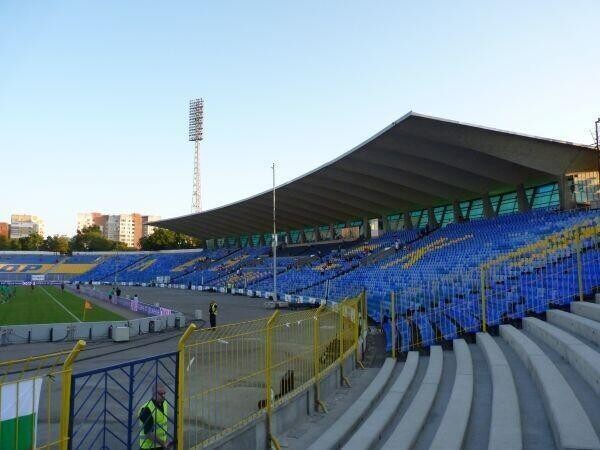
At first glance these tables appear to look just like a current league table but the difference being the number of games played and points tally relate specifically to Home matches (Home Table) or Away matches (Away Table).
Here are extracts showing the top and bottom five teams in the Home Form, Away Form and current Premier League table for the season in progress.
Top 5
| Home | Pts | Away | Pts | Overall |
|---|---|---|---|---|
| Liverpool | 45 | Liverpool | 37 | Liverpool |
| Leicester | 30 | Man C | 28 | Man C |
| Man C | 29 | Chelsea | 24 | Leciester |
| Man U | 29 | Leciester | 23 | Chelsea |
| Tottenham | 26 | Wolves | 21 | Man U |
Bottom 5:
| Home | Pts | Away | Pts | Overall |
|---|---|---|---|---|
| B/mouth | 17 | Brighton | 11 | West Ham |
| A Villa | 17 | B/mouth | 10 | Watford |
| West ham | 15 | Watford | 10 | B/mouth |
| Norwich | 15 | A Villa | 8 | A Villa |
| S/Hampton | 14 | Norwich | 6 | Norwich |
The teams play 19 home and away fixtures in the English Premier League so they still have between 4 to 6 fixtures to play home and away in these examples.
With a quarter of the English Premier League season remaining there is now a nice data sample size for analysing teams home and away form.
The form stats will evolve as the season progresses and caution is advised in the early stages with limited data to analyse.

Looking at the Premier League example it’s no surprise Liverpool are the top form football team both in the home and away table having dropped just five points all season.
The five points Liverpool have dropped have been in away games:
- Home form stats = 45 points from 15 matches
- Away form stats = 37 points from 14 matches
The following three teams in the table have the biggest difference between points gained at home compared to away.
| Team | Home Pts (rank) | Away Pts (rank) |
|---|---|---|
| Man Utd | 29 (4th) | 16 (9th) |
| Everton | 25 (7th) | 12 (15th) |
| Arsenal | 26 (6th) | 14 (12th) |
Southampton are worth a mention as they sit bottom of the home table with 14 points but as high as 6th in the away table with 20 points. They are the only Premier League team in the example to have gained more points away from home.
Another way of utilising home and away form when looking for winning predictions is to specifically compare how teams have performed against similarly ranked opponents.

This can also be broadened and categorised into home and away form against top half teams and home and away form against bottom half teams.
Using an example, Arsenal currently sit in 9th place in the League table and we are going to analyse their upcoming home match against 3rd placed Leicester City.
As we will be looking at comparative results in this example, we will look at this aspect of football form study in the next section.
Comparative Results
Comparative results are an important aspect of form study when looking for winning football bets. By analysing previous results against teams of a similar league ranking, bettors can form a better understanding of the most likely outcome.
For example, Arsenal have won six home games in the League against teams currently below them.
Are those six wins of any relevance in the upcoming home match against 3rd place Leicester City?
Some bettors may say yes because winning matches is good for team morale and form.
Many will also conclude they have little relevance as Leicester are more likely to pose a sterner test bearing in mind they are currently 3rd in the League table.
We already know from our analysis in the current form table section of this article, Arsenal are the only unbeaten Premier League team in the last eight matches.
They have beaten 5th placed Manchester United at home and drawn at 4th placed Chelsea in their recent run of form, noteworthy results when we consider their next opponent.
We now want to look at the bigger picture and season to date so we are going to compare Arsenal’s home results against teams above them and more specifically those similarly ranked as Leicester.
The table shows Arsenal’s results against the teams currently above them, the home team score is shown first for the Away matches:
| Team | Home | Away |
|---|---|---|
| Liverpool | - | 3-1 |
| Man C | 0-3 | - |
| Leicester | - | 2-0 |
| Chelsea | 1-2 | 2-2 |
| Man U | 2-0 | 1-1 |
| Wolves | 1-1 | - |
| Sheff U | 1-1 | 1-0 |
| Tottenham | 2-2 | - |
| Arsenal | - | - |
As mentioned we know Arsenal have won six home league matches against teams below them but when we look at their home results against teams currently above them, it is a different story.
The only win came against 5th placed Manchester United which we know is recent so that is a plus.
However, they have lost against 2nd placed Manchester City and 4th placed Chelsea.
Football Form Betting
So although we can take a positive view of the recent win against Manchester United it’s how we assess that result and the bigger picture knowing they have lost both home games against top four teams.
We could also take a look at their away form against the teams above them to try and help gain a clearer picture.
Draws at the 4th and 5th placed teams are respectable but defeats at the top team and more significantly 2-0 at Leicester City in the reverse fixture does not bode well for an Arsenal victory.
The only positives for an Arsenal win at this point is their unbeaten run and recent win against Manchester United.
For Leicester City, we will compare their away results against top half teams and more specifically those similarly ranked as Arsenal:
| Team | Home | Away |
|---|---|---|
| Liverpool | 0-4 | 2-1 |
| Man C | 0-1 | 3-1 |
| Leicester | - | - |
| Chelsea | 2-2 | 1-1 |
| Man U | - | 1-0 |
| Wolves | 0-0 | 0-0 |
| Sheff Utd | - | 1-2 |
| Tottenham | 2-1 | - |
| Arsenal | 2-0 | - |
Referring back to the away form table in the previous section, Leicester City have the 4th best away record in the Premier League so that in itself is a positive pointer especially considering Arsenal’s home record against the top five teams.
Leicester City have won seven away matches in the League although six were against teams below Arsenal.
So in that respect the same question can be asked as with Arsenal’s home wins against lower placed teams, are those wins relevant for this match?
The answer again would probably see a divided response with more favouring no relevance to this match.
When we look specifically at Leicester’s away results against the top half teams, they have three defeats and two draws against the top six teams and a win at 7th placed Sheffield United.
If you look at all of Leicester’s results against the top six teams then it reveals no wins, but below those they have beaten the teams in 8th and 9th (Arsenal) in addition to the one win away.
1st = Leicester City to Win
2nd = Draw
3rd = Arsenal to Win
Would a Leicester City win be the most likely result by just analysing comparative results home and away?
Again, this is just one way of assessing football form.

The current form table told us Arsenal are performing better than Leicester City who have picked up half as many points as Arsenal in their last eight fixtures.
So when comparing current form and comparative results for both teams, suddenly the picture is less clear.
Before we move away from the statistical analysis aspect and onto looking at other factors that can impact on a football team’s form we will take a general look at Goals Stats.
How Important are Goals in Football Form?
In this section we will show how Goals Stats data can be analysed and utilised in a similar way to the form stats tables.

Goals Stats Data
Below are extracts showing the top and bottom five teams in the tables for Goals Scored (Offence - GF) and Goals Conceded (Defense - GA) stats for the English Premier League season in progress:
Top 5 Teams:
| Offense | GF | Defence | GA |
|---|---|---|---|
| Man C | 68 | Liverpool | 21 |
| Liverpool | 66 | Sheff Utd | 25 |
| Leicester | 58 | leicester | 28 |
| Chelsea | 51 | Man U | 30 |
| Tottenham | 47 | Man C | 31 |
Bottom 5 Teams:
| Offense | GF | Defence | GA |
|---|---|---|---|
| B/mouth | 29 | B/mouth | 47 |
| Watford | 27 | West Ham | 50 |
| C Palace | 26 | S/hampton | 52 |
| Newcastle | 25 | Norwich | 52 |
| Norwich | 25 | A Villa | 56 |
Although Manchester City trail Liverpool by 25 points in the current League table they have actually scored two more goals and played one less match.
Defensively Manchester City have conceded 31 goals compared to Liverpool’s 21.
Also looking at the defense table stats, only leaders Liverpool have conceded fewer goals than Sheffield United who deserve a worthy mention on their first season back in the top flight of English football.
Norwich sit bottom of the Premier League table and joint bottom of the goals scored table, the old adage ‘goals win games’ springs to mind!
At the time of writing, Aston Villa have conceded the most goals (56) in the example.
These tables reflect the season as a whole so comparisons can also be drawn when looking how teams are performing in their current form.
How To Bet On Goals
Football Goals stats are in categorised table format which correspond to the various goals betting markets available like ‘Both Teams To Score’ and ‘Total Goals’, thus providing an excellent betting tool for bettors looking for specific stats for how to bet on goals.
Betting on goals orientated markets like ‘Both Teams To Score’ (BTTS) and Total Goals (Over/Under) is extremely popular, these two way outcome markets are great for bettors who like playing multiple selection acca’s for a small outlay with the potential of a nice profit.
Bettors playing ‘Both Teams To Score - Yes’ know if they are waiting on a team to score their bet has a chance right up until the final whistle of the match.
Football Goals stats are compiled in a way which makes them a perfect betting tool for analysing possible betting angles on these markets.
Here is an example table of the 2019/20 Serie A season in progress, showing how many times ‘BTTS’ - Yes has happened for each team:
| Serie A | BBTS Games | % |
|---|---|---|
| Bologna | 20 | 77% |
| Atalanta | 18 | 72% |
| Napoli | 18 | 69% |
| Cagliari | 17 | 68% |
| Juventus | 17 | 65% |
| AS Roma | 17 | 65% |
| Genoa | 17 | 65% |
| Fiorentina | 16 | 62% |
| Lazio | 16 | 62% |
| Lecce | 16 | 62% |
| Sassuolo | 16 | 64% |
| Inter Milan | 16 | 64% |
| SPAL | 14 | 54% |
| Sampdoria | 14 | 56% |
| Brescia | 13 | 50% |
| AC Milan | 13 | 50% |
| H Verona | 13 | 52% |
| Torino | 12 | 48% |
| Parma | 11 | 44% |
| Udinese | 10 | 38% |
We have used Serie A because along with the German Bundesliga, these two out of the major European domestic leagues in the 2019/20 season have produced the highest percentage of matches (59%) with both teams scoring.
Including all the teams in the example is also important as we can analyse the teams who have a higher % of matches above the 59% and those who are below.
The total % of matches with both teams scoring in Serie A is 59%.
Which in decimal odds terms is 1.69
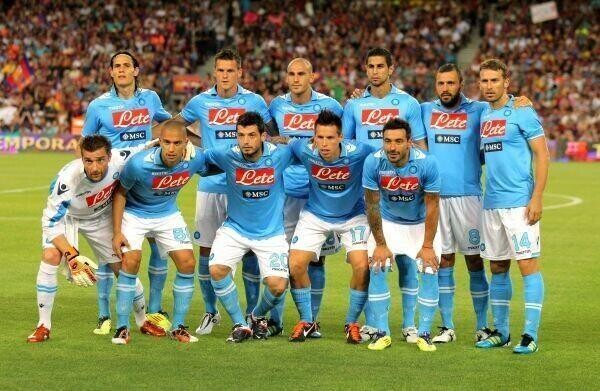
So, if we are placing a bet on BTTS in a Serie A match and we are getting better odds than 1.69 you could say that is pretty good?
As 1.69 reflects the number of times BTTS has occurred in the current Serie A season.
However, if the match we are betting BTTS on was Udinese who have only had 10 matches (38%) finish with both teams scoring against Parma (11 matches 44%) then we would need to reconsider.
Using the lowest % of BTTS for the two teams (Udinese), 38% equates to 2.63 in decimal odds.
If the bookies were offering odds of greater than 2.63 for BTTS in this match then although these two teams have had the least number happen, it would still warrant consideration.

How to find value sports bets is one of the most important factors in making a profit betting over the long term.
Although, betting on an outcome which has not happened often obviously involves more risk than betting on an outcome that happens more often.
With that in mind, it’s the football teams at the top of the Serie A ‘BTTS’ table where we need to focus as regards a possible profitable betting angle with a high strike rate.
If we take a look back at the ‘BTTS’ table we have Bologna at 77% on top and the following teams down to Inter Milan on 62% in 12th are all above the 59% mark.
Take Bologna for example:
77% of their 26 Serie A matches have finished with both teams scoring.
Converted into decimal odds that 77% is 1.29
So if we are getting better than 1.29 for BTTS in Bologna matches then that looks to be a nice edge in our favour.
Bettors may be happy to bet these instances without any further consideration, to be fair it has resulted in 77% of Bologna’s Serie A matches.
We could even take the BTTS stats another step further by comparing the Home BTTS % and Away BTTS % for teams in the current season.
Here is an example of the top three Serie A teams for Home matches ‘BTTS’:
| Seria | BTTS Home | BTTS Away |
|---|---|---|
| Bologna | 85% | 77% |
| Sassuolo | 77% | 64% |
| Atalanta | 75% | 72% |
Comparing the Home ‘BTTS’ table to the overall ‘BTTS’ table shows Bologna are still at the top and we can now see 85% of their home matches have finished with both teams scoring which is higher than the 77% for all their matches.
Also Sassuolo are really interesting especially as another potential betting angle for ‘BTTS’ in their home matches as their 77% ranks 2nd best and yet their 64% for all matches ranks them only joint 11th.
Here is an example of the top three Serie A teams for Away matches ‘BTTS’:
| Serie A | BTTS Away | BTTS All |
|---|---|---|
| Napoli | 77% | 69% |
| Juventus | 77% | 65% |
| Lazio | 75% | 62% |
The top three here are all of interest for a ‘BTTS’ potential betting angle in their away matches as they all 75% or greater and a higher percentage compared to all their matches.
We can also utilise recent results for a team, as covered in the earlier current form section.
Here is an example from the German Bundesliga showing Borussia Monchengladbach’s last seven results:
| M'Gladbach | 3-1 | FSV Mainz |
| RB Leipzig | 2-2 | M'Gladbach |
| Dusseldorf | 1-4 | M'Gladbach |
| M'Gladbach | 1-1 | Hoffenheim |
| Augsburg | 2-3 | M'Gladbach |
| M'Gladbach | 1-2 | B Dortmund |
| M'Gladbach | 2-1 | FC Koln |
This is useful when analysing potential ‘BTTS’ bets as this data gives bettors an idea of how teams are currently trending as in streaks of scoring and/or conceding.
In the above Bundesliga example, Borussia Monchengladbach have had seven consecutive league matches with both teams scoring.
We have illustrated a similar analysis for the BTTS and Total Goals markets covering the last five seasons in our German Bundesliga Stats & Betting Guide in the Betting Strategy Section on OLBG.
Before we move onto the next section there is another area we can utilise for the ‘BTTS’ and Total Goals markets and that’s previous head to head results.
Here is an example using matches between Crystal Palace and Arsenal in the Premier League over the past few seasons (2017/18 to 2019/20):
| Home | Score | Away |
|---|---|---|
| C Palace | 1-1 | Arsenal |
| Arsenal | 2-2 | C Palace |
| Arsenal | 2-3 | C Palace |
| C Palace | 2-2 | Arsenal |
| Arsenal | 4-1 | C Palace |
| Arsenal | 2-3 | C Palace |
So the last six Premier League clashes between Crystal Palace and Arsenal have finished with both teams scoring.
Five of the last six matches have finished with at least 4 goals scored (Over 2.5 Goals)
It’s interesting the latest encounter was the only match which didn’t see at least three goals in total although both teams still scored.
This 1-1 draw was early in the reign of Mikel Arteta’s appointment as Arsenal manager.
Cue the next section...
We will now take a look at the other factors aside from football stats data that can influence performance levels of in form football teams.
How to Use Other form to make Winning Football Predictions
There are many more aspects of football form that can be used in trying to find an angle to making winning football predictions, and here we take a look at just some of them
Managerial Influence
In this section we will analyse how managerial influence and tactical awareness can impact on a team’s form.
This encompasses:
- A New Managerial Appointment
- Stats, Honours & Playing Styles
- Manager Head to Heads
A New Managerial Appointment
We will begin with the question we raised when assessing the current form table and asking were there other factors to consider in Arsenal’s recent improvement in form?
We analysed and concluded their eight match unbeaten run and current form had plenty of substance with six of their eight opponents being in decent form and coming from a higher position in the League table.
So why are Arsenal enjoying their best spell of the campaign, unbeaten in eight matches and winning three in a row for the first time this season ?
There is more than a fair chance the answer is largely due to the appointment of former player Mikel Arteta as manager on 22nd December 2019.
This is Mikel Arteta’s first managerial role, however he spent five years as an Arsenal player before retiring.
A solid midfielder who read the game well, he assisted Pep Guardiola at Manchester City for three years before taking this big step.
With around half of the Premier League season complete, he is Arsenal’s third manager of the season.
Taking charge of a squad of players enduring an average campaign, possibly lacking self confidence through below par results and performances and the uncertainty changes behind the scenes bring.
Here are the Premier League stats records of Arsenal’s three managers this season:
- Unai Emery’s 18 month reign came to an end on 29th November 2019.
- Freddie Ljungberg took temporary charge until 21st December 2019.
| Manager | P | W | D | L | Win% |
|---|---|---|---|---|---|
| Emery | 13 | 4 | 6 | 3 | 31% |
| Ljungberg | 5 | 1 | 2 | 2 | 20% |
| Arteta | 10 | 4 | 5 | 1 | 40% |
Unai Emery’s record was by no means the worst set of stats you are going to see but the unrest was building from the fans perspective and the direction the team was heading so a change at the helm was not a big surprise.
The appointment of former Arsenal player Mikel Arteta does seem to have had the desired effect with four wins in ten matches and unbeaten in the last eight played.
Arsenal have kept seven clean sheets this season and four have come in Arteta’s ten matches, so no surprise results have improved.
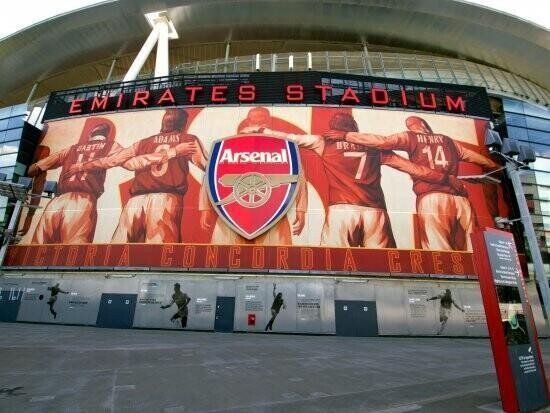
So we have outlined here that a change at the helm can spark a change in form and results with a new manager’s philosophy on football and a happy dressing room.
Obviously this is two-fold when analysing matches in search of winning predictions as in you may be impressed with the current form of a team but their next opponent may be a team on a poor run of form but will play their first match under a new manager.
Mentioning Pep Guardiola in this section leads us nicely into the next aspect regarding managerial stature and tactical awareness.
Stats, Honours & Playing Styles
Mikel Arteta may be just starting out on a managerial career but he learned his trade for three years under the guidance of one of the most successful managers in European football.
At the time of writing, Pep Guardiola is one of three current English Premier League managers who are listed in the top ten most successful managers for European club competition trophies won:
| CL | EL | SC | Total | |
|---|---|---|---|---|
| Ancelotti | 3 | 0 | 3 | 6 |
| Guardiola | 2 | 0 | 3 | 5 |
| Mourinho | 2 | 2 | 0 | 4 |
*Carlo Ancelotti also won the now defunct Intertoto Cup.
Managing Barcelona, Pep Guardiola won the Champions League twice and Spanish La Liga on three occasions.
He has three German Bundesliga titles with Bayern Munich and two English Premier League titles with Manchester City.
The following table shows Pep Guardiola’s excellent stats for the German Bundesliga, La Liga & English Premier League matches:
| Team | PL | W | D | L | GD | Win% | Pts/p/g |
|---|---|---|---|---|---|---|---|
| Munich | 102 | 82 | 11 | 9 | +196 | 80% | 2.52 |
| Barca | 152 | 116 | 25 | 11 | +303 | 76% | 2.45 |
| Man C | 142 | 105 | 18 | 19 | +229 | 74% | 2.35 |
Including all domestic cup and European club competitions, Pep Guardiola has won over 70% of his 660+ matches as a club manager at the time of writing.
As mentioned, the English Premier League is blessed with an array of the most successful managers at European club level.
Carlo Ancelotti (Everton) and Jose Mourinho (Tottenham) join Pep in the top ten most successful managers in European Club trophies won and Liverpool’s Jurgen Klopp has a Champions League win on his CV.
The point of referring to these top managerial names is how some differ in how they like their teams to play, yet all have still enjoyed numerous success.
Pep Guardiola and Jurgen Klopp you could class in the same bracket of wanting their teams to play attractive attacking football.
Great counter attacking sides who can move the ball forward quickly but also at the same time are comfortable in possession.
They have assembled squads of the highest quality so it’s no surprise they have contested the English Premier League title in recent seasons.
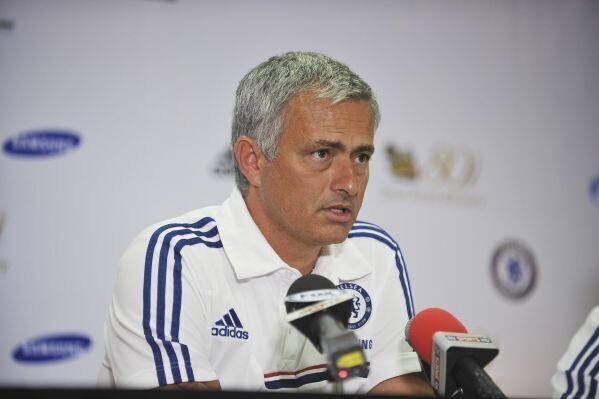
Jose Mourinho has acquired the “parking the bus” tag in recent seasons when setting up his teams in a defensive mode and making life tough for the opposition to create scoring opportunities.
Carlo Ancelotti has enjoyed great success with teams who were very organised and got the job done with no frills and spills.
So when analysing two football teams respective chances of winning a match, we can look at current form and we can look at comparative results but we also need to look at how they are likely to match up and how managerial tactical awareness can influence the outcome.
Manager Head To Heads
We will look at team head to head results and their influence on form in the next section, for this section we will focus on manager head to head records.
The merry go round of managers changing jobs and particularly those headhunted by the best football teams when a vacancy arises means two top managerial brains going head to head is possibly of more relevance nowadays than assessing team head to head records.
Having listed Pep Guardiola’s trophy achievements in the previous section, in the table below at the time of writing are his head to head stats against some of the top Premier League football managers past and present:
| Manager | W | D | L | Win% |
|---|---|---|---|---|
| Pellegrini | 11 | 1 | 2 | 79% |
| Mourinho | 11 | 6 | 6 | 48% |
| Pochettino | 10 | 5 | 3 | 56% |
| Silva | 8 | 0 | 0 | 100% |
| Dyche | 8 | 1 | 0 | 89% |
| Emery | 8 | 4 | 0 | 67% |
| Howe | 7 | 0 | 0 | 100% |
| Klopp | 7 | 2 | 9 | 39% |
| Moyes | 6 | 1 | 0 | 86% |
| Sarri | 5 | 0 | 1 | 83% |
Not really surprising to note Pep Guardiola has gone head to head on 23 occasions with Jose Mourinho which is more clashes than with any of the other top managers in the game.
Having crossed swords in Spain and England, Guardiola leads the games won 11-6 and showing a near 50% win strike rate.
Pep took over the hot seat at Manchester City from Manual Pellegrini so it’s interesting to note his fine record against him winning 11 of their 14 (78%) head to heads, losing just twice.
Bearing in mind Manchester City’s current battles with Liverpool in the Premier League we can’t help but notice Pep’s only negative win record is against Jurgen Klopp

They crossed swords in Germany initially when Pep Guardiola was at Bayern Munich and Jurgen Klopp managed Borussia Dortmund.
Here is a table showing their respective stats record for German Bundesliga matches:
| Manager | PL | W | D | L | GD | Win% | PPG |
|---|---|---|---|---|---|---|---|
| Guardiola | 102 | 82 | 11 | 9 | +196 | 80% | 2.52 |
| Klopp | 238 | 133 | 56 | 49 | +221 | 56% | 1.91 |
The head to head match score in Germany was 4-4 whilst in England at the time of writing it’s 5-3 to Jurgen Klopp.
Here is a table showing their respective stats record for English Premier League matches:
| PL | W | D | L | GD | Win% | PPG | |
|---|---|---|---|---|---|---|---|
| Guardiola | 142 | 105 | 18 | 19 | +299 | 74% | 2.35 |
| Klopp | 173 | 113 | 39 | 21 | +209 | 65% | 2.18 |
Although Klopp is the only manager to hold the head to head upper hand with Guardiola, it’s interesting that he has never managed to win a league title when Guardiola has managed a team in the same league.
That is about to change!
The official Premier League website is an excellent resource for researching manager, team and player stats records.

Let’s now take a look at team head to head records.
H2H Form in Football
Many bettors use head to head results for teams over a number of seasons when looking for profitable betting angles.
But just how relevant are ‘old’ head to head results when looking for winning football predictions?
It depends how many seasons we are referring back to but a team’s head to head record can often become a psychological advantage regardless of current form and the season as a whole.
Derby matches regularly feature when looking at head to head results and statistics, as we can be fairly sure that both teams are putting in 100% for the whole 90 minutes.
A strong trending head to head record can make match odds very appealing for form students searching for a betting edge as bookies tend to base match odds markets on recent form and current factors, more so than how the teams got on three years ago etc.
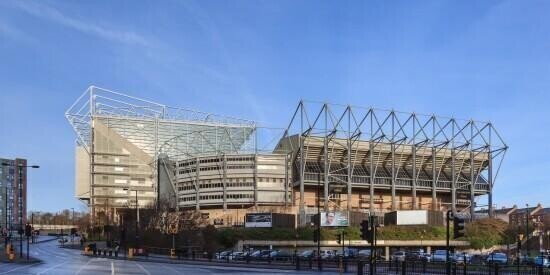
For example, Newcastle and Southampton are two Premier League teams of similar quality as evidenced by the fact at the time of writing only one point separates the teams after 29 matches in the current campaign.
They have also finished the previous two Premier League seasons with a finals points tally margin of 6 and 8 points so generally they have performed similarly in the last three years.
Perhaps the one disparity from their similarities heading into their latest match was that Southampton had picked up 12 points in their last eight League matches compared to Newcastle’s tally of 7 points.
Hence, the bookies best available match odds (decimal) for their latest League encounter on the 7th March 2020 were as follows:
- 1.74 - Southampton
- 3.85 - Draw
- 4.94 - Newcastle
Now, here’s a table showing their last six Premier League encounters with the result of that March 7th clash at the top:
| Home | Score | Away |
|---|---|---|
| Southampton | 0-1 | Newcastle |
| Newcastle | 2-1 | Southampton |
| Newcastle | 3-1 | Southampton |
| Southampton | 0-0 | Newcastle |
| Newcastle | 3-0 | Southampton |
| Southampton | 2-2 | Newcastle |
So, Newcastle were unbeaten in their five previous matches against Southampton.
They had won three including the last two and yet were priced up at nearly 4/1 to win that latest match!
Also with reference to the head to head trending this is an example of how circumstances evolve as the previous six encounters saw Southampton unbeaten.
As mentioned in the managerial head to head section, the gaffer aspect warrants at least equal assessment as team head to head results, however that may not always be the case with many bettors.
We at least need to give it some thought if we are looking at the head to head record of two teams who have changed managers in the last two or three years, what relevance does looking at their head to head results from 5 to 10 years ago have?
The above example showed how Southampton’s seven match unbeaten run against Newcastle in the lower leagues under different leadership between 2013 and 2017 has now evolved with Newcastle unbeaten in the last six encounters in the top flight under different managers.
Team News in Football Form
In this section, we will look at how important it is to assess team news in European football and any relevant pre-match information before making your predictions and bets.
You may have already completed your assessment for a match utilising current form, comparative results and the recent head to head record.

However, injuries or suspensions to key players could massively impact on the current form of the team and how they are likely to perform in the next match.
We touched on the importance of ‘Player Form’ in the early part of this article, here is the example in more detail.
A quick look below at the Serie A top goalscorer table shows Lazio’s Ciro Immobile on 27 Serie A goals in the current season, 6 ahead of nearest pursuer Cristiano Ronaldo.
| Player (Team) | Goals Scored |
|---|---|
| Ciro Immobile (Lazio) | 27 |
| C Ronaldo (Juventus) | 21 |
Now Ciro Immobile’s excellent tally of 27 goals is probably a combination of his quality to convert a goal scoring opportunity and the numerous scoring chances created for him by his Lazio team mates.
His 27 goals undoubtedly are a huge contributory factor to Lazio’s league position and unbeaten run of form over the past five months.
Now let’s say for example, he has played every minute of every Serie A match in that unbeaten run but has picked up an injury and will be unavailable for the next match.
Does this change your original thoughts in Lazio being a solid win bet prediction ?
Possibly not, but it is likely to at least involve further consideration before placing your bet on your initial form assessment.
Gathering any available team news before making your prediction obviously is applicable to both teams in the match.
Your team pick may be missing key players through injury and suspension but so may be their opponent which could be more detrimental to their chance in the match, hence strengthening the chance of your original prediction.
The final section of this article can also impact on the team news aspect which as a result can affect team form, let’s take a look at the issues related to fixture scheduling.
How Fixture Scheduling Affects Football Form
In this section we will look at the various ways of how the fixture schedule can impact on a team’s form, starting with an important factor for the football teams also competing in European competitions.
To check upcoming fixtures a quick look at the football tips here at OLBG
Fixture Overload Affects Form
Fixture scheduling can play a big part in how a team’s form evolves.
A team may be riding the crest of a wave, winning match after match and can’t wait for the next one.
The winning form continues in the domestic cup competitions, now the fixtures are beginning to stack up.

A match at the weekend followed by one in midweek followed by another next weekend then another in midweek then the following weekend, you get the picture.
As a result, team form starts to waiver because of the busy schedule with one or two injuries to key players, bookings building up leading to suspensions and squad rotation impacting on results etc.
A good example of highlighting fixture congestion is to use one team who are also playing in a European competition and the other team has just the league and domestic cup competitions.
The following table shows the number of matches played from the start of the season up until 1st January 2020:
| 27/7/19 to 1/1/20 | Matches Played |
|---|---|
| Wolverhampton W | 35 |
| Burnley | 22 |
Wolves qualified for this season’s Europa League and so their season started on 27th July 2019 and had played three Europa League matches by the time Burmey started their English Premier League campaign on 10th August 2019.
Now Wolves may have prepared very well for their early start to the season because they were unbeaten (won 6 and drew 3) in the nine official matches they played in just 35 days from 27th July to 29th August.
By the time Wolves had played their 9th match in 35 days on 29th August, Burnley had played just four, winning once.
The early Europa League games may have given Wolves an edge to start as regards their match fitness and playing “competitive” matches rather than friendlies or pre-season tournaments on tour.
However after this busy start they then lost their next three games in the space of 18 days before they began another unbeaten run of seven matches.
Wolves deserve plenty of credit because they wouldn’t have the biggest squad depth to cope with all these fixtures but they sit 6th in the Premier League at the time of writing.
In summary, fixture overload can be detrimental if teams do not have the squad resources to cope but on the other hand playing regularly and winning matches builds confidence.
This again is where the managerial expertise comes to the fore and rotating the squad to cope with the fixture demands without impacting on the team’s form, morale and success.
The Effect of European Fixtures on Football Form
Another aspect of the fixture schedule and vitally important from an assessing form perspective is when teams have an important European match approaching on the fixture list.
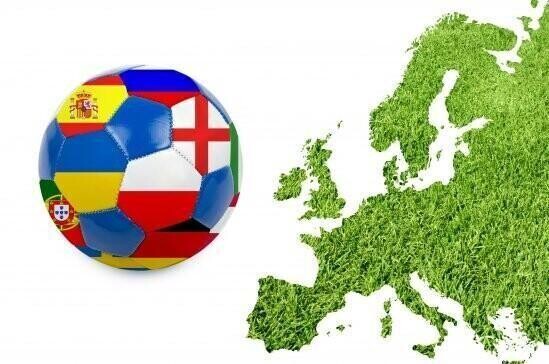
As a competition like the UEFA Champions League progresses through the initial Group stage, managers sometimes have the luxury of qualification assured so may rotate their squad players if a big league match is scheduled either side.
On the flip side, managers needing to ensure Group qualification to the knockout phase will ensure their strongest line ups are saved for the big European matches and so may rotate the squad for league fixtures before and after the European match.
The example below emphasises why it is vital for bettors to check a team’s fixture list and how they perform around European matches, before making bets based on current form involving these top football teams.
Manchester City have lost seven Premier League matches this season and four have preceded or followed a Champions League match:
| Norwich | 3-2 | Man City |
| S Donetsk | 0-3 | Man City |
| Man City | 2-0 | D Zagreb |
| Man City | 0-2 | Wolves |
| Atalanta | 1-1 | Man City |
| Liverpool | 3-1 | Man City |
| Man City | 1-2 | Man Utd |
| D Zagreb | 1-4 | Man City |
They also drew at Newcastle after drawing at home to Shakhtar Donetsk in the Champions League so we can conclude Man City have dropped 14 points this season when playing fixtures either side of a European match.
To be fair, defeats against leaders Liverpool and in the big ‘derby’ clash against Manchester United are understandable at any stage of the season.
However, Manchester City’s three spells of five-match winning streaks this season lures bettors into thinking City are a reliable selection for winning bets.
That assumption becomes highly questionable either side of European matches this season.
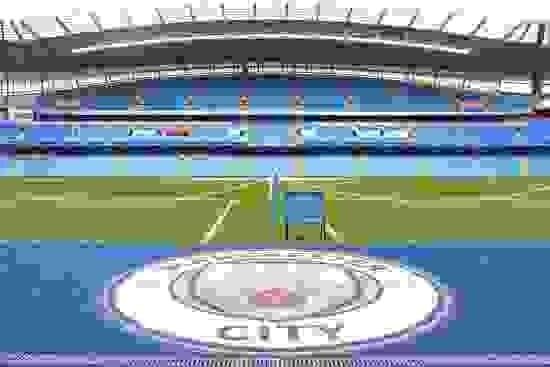
Especially when you consider their best odds in the other two defeats were 1.14 at home to Wolves and 1.09 away against the bottom team Norwich.
A nice betting angle for bettors taking on Man City in Premier League matches either side of European ties this season.
The other example involved Tottenham who admittedly had a poor start to their season but was compounded by losing their Premier League match which followed a Champions League match, this occurred in each of their first three group stage ties.
All three Premier League defeats were on the road:
- 2-1 at Leicester
- 3-0 at Brighton
- 2-1 at Liverpool
Food for thought and the Manchester City example in particular highlights there are possible betting angles to explore when current form and European week ties meet.
International Break Effects on Football Form
An ‘International Break’ tends to be more of an inconvenience for the top teams and teams who have a large core of players called up for international duty, in more ways than one.
A week to ten days of no league fixtures because of the international break can come at the wrong time for teams enjoying good current form, they lose the impetus.
Teams then can encounter difficulties finding the same performance levels as before the break, again due to various factors.

Players returning from international duty may have just played two games in the space of a week and endured long flights travelling across the world.
Fatigue can become an issue and returning key players may be rested for the next Premier League which can impact on previous form levels.
Key players may also return from the international break having picked up a knock or even worse a serious injury meaning a lengthy spell on the sidelines which more than likely will impact on a team’s form.
This aspect does correspond with the Team News section we covered and looking out for any snippets of news regarding key player unavailability.
In summary, bettors need to tread carefully when reading a football team’s form stats and assuming an excellent spell before the international break will continue in the same vein immediately.
Does form in Football Apply to 'Derbies'?
How often do we hear that voiced when two local rivals meet, is it a myth or are there form stats to verify this theory?
OLBG member “danbradley” conducted an experiment back in 2013 covering a few seasons of Premier League ‘Derby’ results to see if there was a betting angle worth exploring in ‘Derby’ matches.
He recorded the analysis in his ‘Derby Matches - Where Is The Value?” blog.
For the rest of this article, we will take a look at the current and recent seasons to see whether the form teams succumbed to their local rivals in the most famous Premier League ‘Derbies’..
Manchester Derby Form
Manchester City v Manchester United
There have been eight in the Premier League since Pep Guardiola took over at Manchester City in July 2016.
He has led Manchester City to two Premier League titles and finished above United in the three seasons to date.
Pep’s record looks like this:
- 4 Wins
- 3 Defeats
- 1 Draw
Ole Gunnar Solskjaer took over at Manchester United in December 2018, he’s been at the helm for the last three, losing the first but winning both in the 2019/20 season.
Manchester City have dominated their rivals when it comes to league titles and form in recent seasons but United won both Premier League matches in 2019/20 and were on a nine-match unbeaten run prior to winning the second ‘Derby’.

Merseyside Derby Form
Everton v Liverpool
Jurgen Klopp began his current Liverpool reign in October 2015, he has been in charge of eight and is yet to taste a ‘Derby’ defeat on Merseyside:
- 5 wins
- 3 Draws
The last Everton victory in a Merseyside ‘Derby’ was back in 2010.
Liverpool very much bossing league form and ‘Derby’ form.
North London Derby Form
Arsenal v Tottenham
Both teams have seen changes on the manager front in the 2019/20 season so we will look at the last ten clashes.
- Draw 5
- Tottenham 3
- Arsenal 2
What is noticeable is the home team has remained unbeaten in those ten clashes.
- Arsenal’s last win at Tottenham was in 2014.
- Tottenham’s last win at Arsenal was in 2010.
The ‘Derby’ form mirrors the overall form of both teams in recent seasons, not a great deal between them.
Analysing these three rivalries in recent seasons of the Premier League largely suggests form and ‘derby’ form match up well.
We will leave you to decide if it’s a myth!
FAQ
FAQ
How to Assess Football Form
What is the best way to start studying football form?
The advice would be to narrow your focus to particular leagues or teams. As you master the basics, you can expand your study.
Should I Keep Form Records
If you want to profit, record-keeping is imperative.
Should I Test My Form Theories
Yes, monitor previous results and performances, then try explaining to a friend or colleague why you favour a team or match, this may highlight something you have missed.
Should I subscribe to websites that charge a fee to access football form?
Many free resources are available, including OLBG, the bookmaker's websites, newspapers, and social media. Before considering paying, check that the information you are after is not freely available.
How early in the week should I start looking at an individual match I am interested in
You should be fully aware of the form of the team/match you are interested in after their previous match and have their full season form to hand. Make sure you are organised and have all the relevant information.
Betting on Football Using Form Study
Understand the odds and what price you are willing/not willing to accept. You should keep track of the "opening show" and see how the odds fluctuate. Make sure you always take the best odds.
Responsible Gambling
You should always gamble responsibly, and never spend more than you can afford.
These next-manager markets are volatile and prices can fluctuate numerous times as there are always plenty of paper talk and rumours.

Responsible Gambling Features, Function and Help
Editorial Information

This article has been created and updated over the years, with pertinent information added to assist the reader. Various betting industry experts have contributed to different sections of this football form blog. We have linked to OLBG member articles where further reading will be helpful; we would like to thank those members who added value to this page. Nigel Skinner fact-checked the above with Steve Madgwick, editing and publishing. Information was gained from multiple sources.



